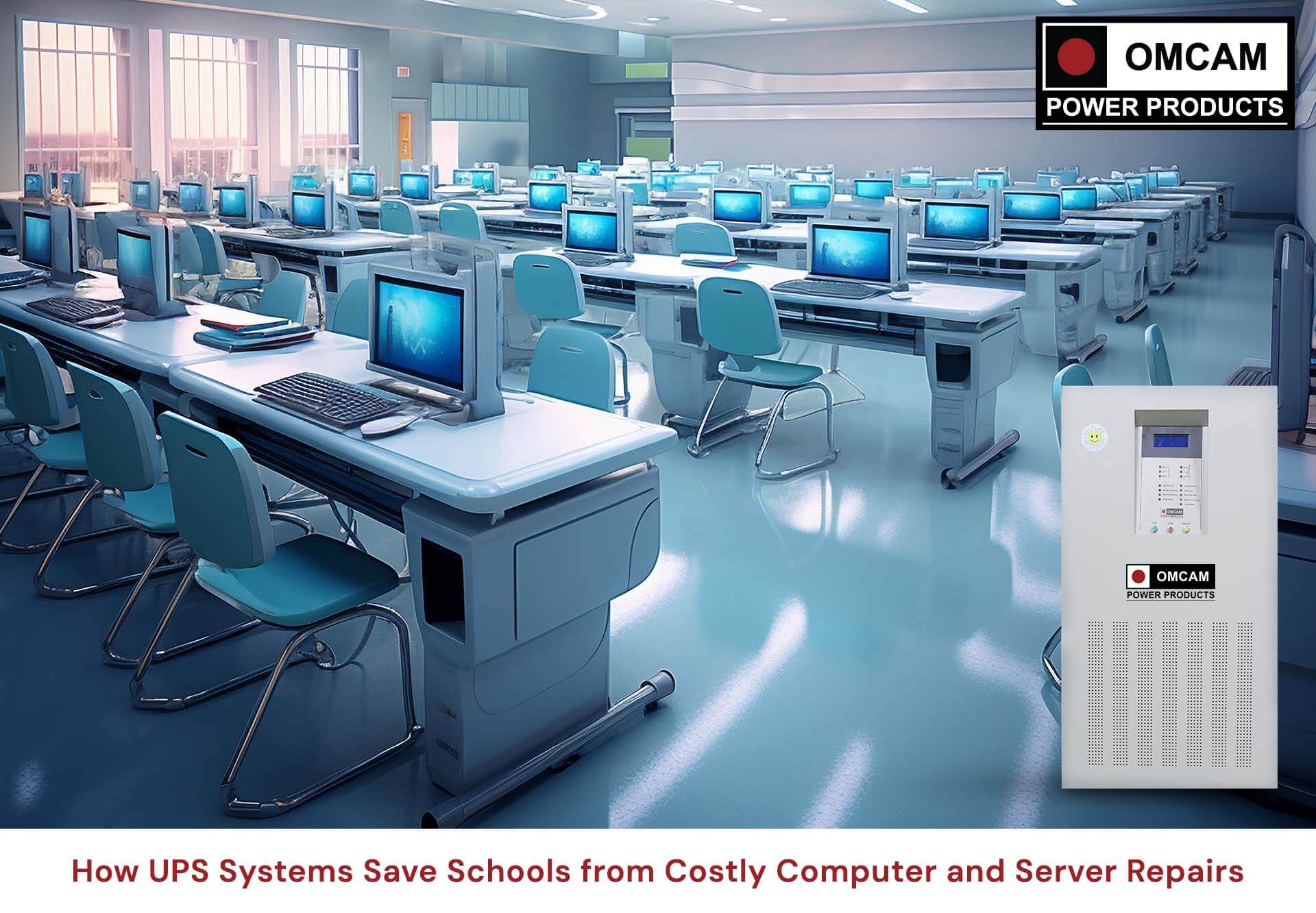In the digital age, schools are increasingly reliant on technology for both administrative functions and classroom instruction. From computer labs and smart boards to student management systems and online testing platforms, schools depend heavily on uninterrupted power to keep everything running smoothly. However, frequent power outages, voltage fluctuations, and electrical surges can pose significant risks to sensitive electronic equipment like computers and servers.
What is a UPS System?
A UPS (Uninterruptible Power Supply) is a device that provides emergency power to a load when the input power source, typically the main electricity, fails. Unlike generators, which can take a few seconds or minutes to start, a UPS kicks in almost instantly. It contains a battery that supplies backup power long enough for devices to shut down properly or switch to an alternative power source.
There are several types of UPS systems, including:
● Offline/Standby UPS: Ideal for basic equipment, these provide surge protection and battery backup.
● Line-Interactive UPS: These adjust for voltage fluctuations and provide backup power.
● Online UPS: These offer the highest level of protection by providing clean and constant power, suitable for critical equipment like servers.
Why Schools are at Risk
Educational institutions often overlook the vulnerabilities in their power infrastructure. Here’s why schools are particularly at risk:
1. Aging Infrastructure: Many schools operate in older buildings with outdated electrical systems.
2. Frequent Outages: Schools in suburban or rural areas often experience more power cuts.
3. Budget Constraints: Limited IT budgets mean hardware replacements can be a significant burden.
4. Heavy Usage: Computers and servers in schools often run for long hours, increasing their sensitivity to power anomalies.
Power disruptions can lead to several problems:
● Hardware failure
● Data corruption
● System crashes
● Increased maintenance costs
● Downtime during critical hours (e.g., exams or online classes)
How UPS Systems Prevent Damage and Save Money
1. Protection Against Power Surges and Spikes
Power surges, which are sudden increases in voltage, can instantly damage internal components of computers and servers. UPS systems act as a buffer, absorbing the excess voltage and regulating power before it reaches the equipment.
Savings Insight: Replacing a server motherboard or a corrupted hard drive can cost hundreds to thousands of dollars. Preventing even one such incident justifies the cost of a UPS.
2. Battery Backup During Power Outages
A power outage, even if brief, can lead to system crashes, data loss, and improper shutdowns. UPS systems give IT administrators enough time to save work, shut down systems properly, or switch to a generator.
Example: Imagine students taking an online exam and the power goes out. Without a UPS, not only is the test lost, but the computers might also be damaged due to a hard shutdown.
3. Preventing Data Loss and Corruption
Servers handle critical data such as student records, exam results, lesson plans, and financial documents. Power loss can corrupt databases or operating systems.
A UPS ensures that servers continue running or shut down gracefully during outages, preventing expensive recovery procedures.
Cost Impact: Professional data recovery can cost between $500 and $3,000 per incident—not to mention the value of potentially lost academic data.
4. Improved Equipment Lifespan
Fluctuating power damages internal components over time. UPS systems stabilize voltage and keep equipment running within safe parameters.
This results in less frequent hardware replacements, extending the useful life of computers and servers.
Budget Benefit: Extending the lifespan of each PC by even one year in a school with 100 computers can save thousands in replacement costs.
5. Minimized Downtime
In today’s learning environment, downtime equals lost instructional time. A UPS keeps systems operational during brief outages, allowing teachers and students to continue lessons with minimal disruption.
Real-World Impact: For schools using digital attendance systems or online grade books, even a 10-minute system crash during peak hours can create administrative chaos.
6. Supports Remote Learning Infrastructure
Since the pandemic, many schools have adopted hybrid or fully remote learning models. Servers hosting LMS (Learning Management Systems) need constant uptime. A UPS protects these servers and ensures students and teachers remain connected.
Security Angle: Server crashes during remote learning sessions could also create vulnerabilities for cyber threats. A stable power supply through UPS reduces this risk.
Choosing the Right UPS for Schools When selecting a UPS for school use, consider:
● Capacity: Match the UPS capacity (measured in VA or kVA) to the total power draw of connected devices.
● Runtime: Choose a UPS that offers enough runtime to either continue operations or shut down safely.
● Type: Line-interactive UPS is suitable for desktop labs; online UPS is better for server rooms.
● Monitoring: Smart UPS systems come with software that notifies staff during outages or battery failures.
Also, don’t forget to account for:
● Maintenance schedules
● Battery replacement costs every 3–5 years
● Installation and setup support
Conclusion
Investing in UPS systems is not just about preventing interruptions—it’s about protecting valuable educational infrastructure. For schools operating on tight budgets, the upfront cost of a UPS system is far outweighed by the savings on computer repairs, data recovery, and reduced downtime.
